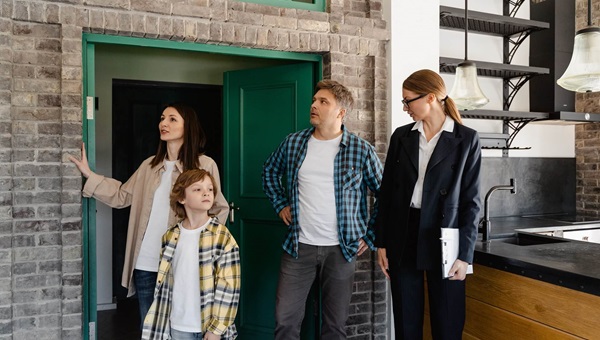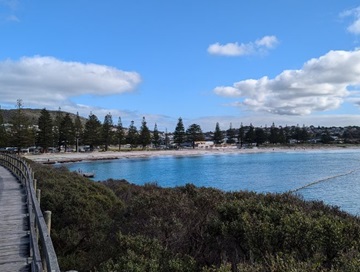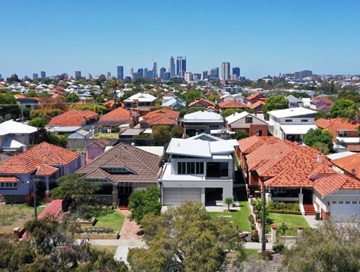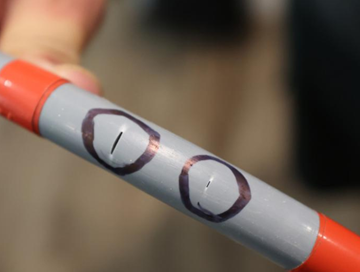Wastewater and effluent disposal
What are composting toilets?
Composting toilets receive and treat human waste using natural decomposition processes, usually without the use of a water flush system.
Some composting toilets have electric or wind driven heating/drying units to assist with the process
A well maintained composting toilet should not smell or create a nuisance.
Wastes are retained for a sufficient period of time so that they are broken down to a safer, more stable and less offensive product.
This material is not sterile and should be handled with care.
Material from composting toilets must be buried and is not permitted to be used for the growing of fruit or vegetable plants
What are the conditions of approval?
Each composting toilet has a set of conditions of approval available from the Department of Health, and the manufacturer will also be able to provide information on the operation and use of their systems.
Systems vary in their size and whether they are approved for permanent or intermittent use.
Some composting toilets can accept food scraps in addition to human waste, as this may assist in the composting process, but not all systems can do so.
Familiarise yourself with the list of approved products.
What are the system arrangements?
There are two basic system arrangements. Some composting toilets are batch systems while others are of a continuous composting design.
The continuous system generally has a large single chamber which waste moves through as it decomposes. They are designed to allow for a minimum detention time to allow wastes to break down before the compost is removed. They should not be overloaded.
The batch systems have more than one receiving receptacle, and more can usually be obtained if required. When the receptacles are full, they can be removed for the composting period or rotated.
What is the process for installing composting toilets?
System installations are only permitted with local government or Department of Health approval. The Department of Health assesses larger development proposals.
If you wish to install composting toilets and associated greywater systems you need to lodge an Application to Construct or Install an Apparatus for the Treatment of Sewage with the Shire. This is to ensure that the systems are of an approved design and manufacture, are properly sized and suitably located.
For more information, please read the Guidance on Applying for Department of Health Approval of an Onsite Wastewater System.
It is an offence to install a wastewater system without an approval and it is also an offence to commission a system prior to a final inspection and approval to use from the local government.
What is greywater?
Greywater is wastewater which comes from the bath, shower, bathroom wash basins, clothes washing machine, laundry trough and kitchen sink.
Western Australia often experiences water restrictions due to low rainfall and the critically low levels of surface water storage. Many people are interested in conserving water by reusing their greywater.
Greywater may be used via manual bucketing or an approved greywater system.
Greywater characteristics will vary according to the number of household occupants, their age, health, water use patterns and the household fixtures from which the greywater is drawn.
What are the requirements for greywater use?
The Code of Practice for the Reuse of Greywater in WA further explains the requirements for greywater use, and provides information on required design and performance requirements for people seeking to have new products approved.
If you are applying greywater manually, the following guidelines should be adhered to:
- Apply greywater in several locations to prevent pooling
- Only bucket greywater to areas that are inaccessible to children and pets.
- Don’t use greywater from the washing of nappies or soiled clothing.
- Don’t use greywater if a member of the household has an infectious disease.
- Don’t put greywater on edible plants or fruit.
- Don’t store greywater.
- Don’t over water. Too much greywater can clog the soil, causing pooling and the development of grey/green slime areas.
- If you are installing a greywater reuse system, it needs to be of a design approved by the Department of Health and properly installed.
What is the installation process?
If you wish to install a system you must lodge an Application to Construct or Install an Apparatus for the Treatment of Sewage with the Shire. This is to ensure that the system is of an approved design, manufacture, and is properly sized and located.
It is an offence to install a wastewater system without an approval and it is also an offence to commission the system prior to final inspection and approval to use from the local government.
The Western Australian Government provides a rebate to help people to be more water wise by offering rebates on a variety of products, including greywater systems.
Information on this can be obtained from the Department of Water website.
What are septic tank systems and how do they work?
Most unsewered developments in Western Australia use septic tank systems to treat and dispose of sewage. These generally consist of two water tight tanks (or one large unit) and two sets of drainage receptacle e.g. leach drains or soak wells.
When wastewater passes through the septic tanks, heavier solids sink to the bottom and undergo bacterial digestion. This reduces the quantity of solids and also changes its composition to sludge, which builds up in the bottom of the tank.
Materials such as grease and oil float to the surface in the tanks to form a crust over the liquid. The remaining liquid, called effluent, flows from the tanks into the drainage receptacles to soak into the surrounding soil where it may undergo further natural treatment processes.
What is the process for installing a septic tank system?
System installations are only permitted with local government or Department of Health approval. The Department of Health assesses larger development proposals.
If you wish to install septic tank systems with leach drains/soakwells or an Aerobic Treatment Unit you will need to lodge an Application to Construct or Install an Apparatus for the Treatment of Sewage with the relevant Local Government Authority.
This is to ensure that the system is of an approved design and manufacture, is properly sized and is suitably located.
It is an offence to install a wastewater system without an approval and it is also an offence to commission a system prior to a final inspection and approval to use from the local government.
Onsite treatment and disposal of effluent systems will not normally be approved if a property can be reasonably connected to sewer. As they are designed to retain the solids in household wastewater, septic tank systems require routine maintenance.
For more information about septic tank systems please read the Department of Health's information about Understanding Septic Tank Systems.
What is the process for decommissioning septic tank?
When a developed property is connected to sewer, usually under the infill sewerage program, any onsite effluent disposal systems such as septic tank and leach drain/soakwell systems will eventually require decommissioning.
This means that the contents of the tank are pumped out (by an approved contractor) and the system is either removed or backfilled.
If the system can’t be removed, the tanks should still be pumped out and the bottom of the tanks can be broken up and the system backfilled with sand.
As there are costs involved in both decommissioning a septic tank and connecting to sewer, householders are not automatically required to decommission tanks when they connect to the sewer.
Under the Health (Treatment of Sewage and Disposal of Effluent and Liquid Waste) Regulations 1974
decommissioning is required when:
- The property is sold
- The use of the development changes e.g. from a residence to a child care centre
- Building extensions may encroach on minimums setback requirements from the system.
Septic tanks which have not been decommissioned should not be paved or built over without approval from the relevant local government.
Under the Code of Practice for the Reuse of Greywater in Western Australia, disused septic tank systems can be converted into the primary treatment tank for a greywater system.
The existing drainage receptacle (e.g. soakwells or leach drains) must be replaced with an approved greywater system.
What are Aerobic Treatment Units?
Aerobic Treatment Units (ATUs) are a multi stage alternative to conventional septic tanks and provide an improved quality of effluent treatment.
The chlorinated effluent from ATUs may be used to surface irrigate garden areas but can only be used below grassed areas. It is not approved for any use in vegetable gardens.
Due to environmental concerns, usually associated with the potential degradation of environmental water bodies, some developments are required to use a wastewater system which is capable of removing phosphates.
Some ATUs are approved as Phosphate removing. These ATUs may use an in-system phosphate removing process or an approved phosphate binding amended soil in the irrigation area.
The type of phosphate removing system can affect the choice of effluent irrigation methods available e.g. amended soil systems cannot be used with drippers
ATUs must be serviced regularly to ensure that they are operating effectively and that the quality of the final effluent is maintained.
What is the process for installing Aerobic Treatment Units?
System installations are only permitted with Shire of Augusta Margaret River or Department of Health approval. The Department of Health will assess larger development proposals.
Persons wishing to install Aerobic Treatment Units or septic tank systems need to lodge an Application to Construct or Install an Apparatus for the Treatment of Sewage with the Environmental Health unit.
It is an offence to commence construction of a wastewater system without an approval and it is also an offence to commission an illegally installed system or to commission a system prior to a final inspection and approval to use from the local government.
For more information please read the Code of Practice for the Design, Manufacture, Installation and Operation of Aerobic Treatment Units.



.tmb-rcarousel.jpg?sfvrsn=94ec25f9_1)

.tmb-rcarousel.jpg?sfvrsn=24ed8b20_1)




